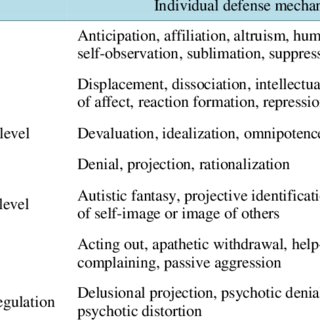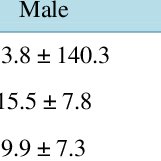January 2015
·
4,488 Reads
·
4 Citations
Health
A person with high-level mental defensive functioning exhibits optimal, effective adaptive states when encountering stressors. This may be an important factor in maintaining a sound campus life. Participants were 47 physically and mentally healthy students (average age 19.0 ± 0.6). We first investigated the developmental level of mental defensive functioning as an indicator of participants’ adaptive state at the time of the study. We used the Defensive Functioning Scale proposed in the 4th edition of the Diagnostic and Statistical Manual of Mental Disorders (DSM-IV). We attempted to quantify this scale by summing scores of seven Defense Levels based on individual defense mechanisms. We then measured physical and mental symptoms using the Cornell Medical Index (CMI), and compared the relationships between symptoms and defensive functioning (defensive functioning scale and physical symptoms, defensive functioning scale and mental symptoms, and physical symptoms and mental symptoms). Finally, we compared male and female results. Although there was no statistical difference, males showed higher average scores than females on the Defensive Functioning Scale vs physical/mental symptoms, which may indicate the relative suppression of women that characterizes the social and cultural background in Japan. In addition, there was a relatively high unisex positive correlation between physical symptoms and mental symptoms, which suggests that university health administrative staff need to provide mental as well as physical care to help students manage stress effectively. However, larger, more comparative studies on the social and cultural background are needed to further explore these issues.





